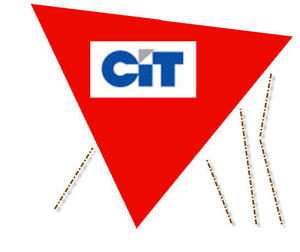Almost every time I go into the local home center, I breeze through the aisle with all the spray paints to see if they have any new and exciting colors.
It seems like I am always coming up with something to spray paint, whether it’s a picture frame we found at a garage sale or a brand-new item we found on sale, but was just not the right color.
I must have 30 to 40 partly used cans of spray paint already, but somehow I just feel a need to see if I am missing anything, I guess. So, when I visit those places, I at least check…though I am careful not to always buy, unless something jumps out at me that I just gotta have!
I find spray painting both frustrating (at times) and very rewarding (usually). To me, there is nothing like making a beat-up-looking object look like new again simply by spraying a little paint onto it.
And that, I think, is my queue and segway into “how to get a good spray paint job” using spray cans. Okay…here we go!
SAFETY:
-Read all spray can labels for guidelines on protective gear, storage of cans, etc.
-Always perform spraypainting operations outdoors. Do not attempt to spraypaint objects or other items inside your home. You will have paint everywhere, no matter how hard you try to avoid it!
Avoid the real cheap spraypaints. Most of them are a lot more apt to run, and it just is not worth saving a few cents, at least to me! I would much rather pay more if I know I will be able to comfortably use it without fear of it running all over the place!
Most home-centers carry decent spray paints, even in their lower price ranges.
Once you have picked out your color(s) and made your purchase, you are ready to spraypaint an object.
Items Needed:
-Can(s) of spray paint
-Object to be spraypainted
-Wire or string to suspend object to be spraypainted; or, newspapers to place on the ground beneath the object if object is to be spraypainted from above (a technique which offers a “self-leveling” effect, and helps to prevent runs, especially on larger surfaces).
-A place outdoors to hang or place the object to be spraypainted…away from cars, house, shrubs, driveway, sidewalk or anything else that may get paint on it from “overspray”.
Preparation of the object to be spraypainted:
-Be sure to clean the object to be painted prior to spraypainting.
-If there is any loose or flaking existing paint, wire brush and scrape away as much of that as you can.
If you will be spraypainting a suspended object, follow these steps:
1) Begin by pressing the spray nozzle on the can in a direction away from everything, just to get a feel for how the spray looks, so you will be better able to control it.
2) Hold the can about six to eight inches from the object, and starting at the top of the object, lightly spray in a smooth and “not-too-slow, but not-too-fast” back and forth horizontal motion, moving downward toward the bottom of the object with each pass.
3) Do not attempt to cover all existing color with the first passes of your spraypainting; several light coats are far better than one heavy one!
4) Work your way AROUND the object in the same back and forth horizontal motions until you have spraypainted your first light coat on the entire object.
5) Depending on the actual shape of the object, you may need to spraypaint the underneath and/or top using the same technique, but obviously at different angles of approach.
6) Allow your first spraypainted coat to dry for at least five minutes, then repeat the technique with your second (light) coat. Then, after drying for another five minutes, apply a third coat in the same manner.
Three evenly spraypainted coats are normally sufficient to adequately and uniformly cover most objects.
Note: If any “runs” develop, wipe lightly with soft cloth, allow to dry, and lightly re-spray that section of the object, taking special care not to re-create the run.
If you will be spraypainting an object on the ground (on newspapers, of course!):
1) Again, begin by pressing the spray nozzle on the spray can in a direction away from everything, just to get a feel for how the spray looks, so you will be better able to control it.
2) Hold the can about eight to ten inches above and parallel to the object to be spraypainted.
3) Lightly spraypaint your first coat with back and forth motion over the entire exposed surface(s).
4) Try to keep your can at the same distance from the object through your spraying motions to ensure equal coverage as you make each pass.
5) Allow your first spraypainted coat to dry for at least five minutes.
6) Repeat the process with a second light coat, then a third if needed.
Note: Spraypainting in this position allows you to “flood” an object…especially useful if object has flat surfaces where the paint can “self-level” without causing puddles or runs. Use caution that you do not over-flood the object, as that may cause drying problems.
As with all freshly painted objects, allow your newly spraypainted objects to dry for sufficient time before you put them to use.
Cleanup:
One of the nice things about spraypainting is the cleanup is usually minimal (if you’ve prepared as outlined). Simply put the cap back on the can and put the can into a safe storage location (read can labels for guidelines). Then, once your spraypainted object is dry enough to handle, put away your wire or string hangers and dispose of your used newspapers, rags, etc.






